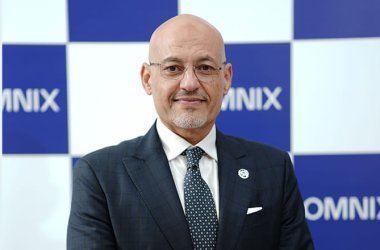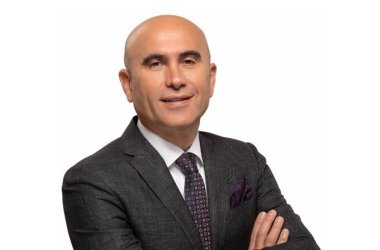Deputy Editor Giorgia Guantario spoke to Serco Middle East’s newly appointed Chief Digital Officer, Paul Bogan, to understand more about his new role, the importance of having a Chief Digital Officer within an organisation and the need for a mindset change to drive business value.
You have been in your role at Serco for a few months now, what do you hope to achieve as Chief Digital Officer moving forward?
The short-term goal is the finalisation of our digital and data strategies which are built on three core pillars; electronic workforce management, data and digital asset management.

Firstly, electronic workforce management – at Serco Middle East we manage thousands of people across multiple contracts. We are working on bringing in more consistency, both regionally and globally, that will drive value in the long term by leveraging a technology-based platform that will focus on productivity, scheduling, rostering and performance management.
Data for us is identifying data points which have an effect on performance, safety and criticality of our clients’ physical assets that we currently manage and how we can start to leverage machine learning and decision making tools to drive efficiencies for long term strategic investment planning or short term asset performance management on behalf of our clients.
Our wraparound is something I am very excited about and this is hot off the press – we will be launching something called “ExperienceLab.” I’ve been very focused on data, and most of our services are on the front line, like the airport or universities. The problem is that as powerful as data is, we are not really leveraging the latest behavioural science techniques that would take it to the next level.
ExperienceLab focuses on user-centric design, so working with our clients and customers to really understand how facilities such as airports, rail systems and universities are experienced by the end-user, and taking this feedback back to our clients to improve the way in which the service is used. It’s something we can visually show clients to understand their customers better and deliver a better experience for them, especially as a lot of preferences come down to culture and behaviour.
In 2012, Gartner predicted that the chief digital officer would be the most exciting executive role in the decade ahead. How would you say this role has changed in this decade and what do you think it will entail in the next?
I don’t think I had even heard the term CDO back in 2012! A major change is that the role is much more commonplace than before. Studies show that 76 per cent of executive committees now believe the role is more relevant compared to when it was first created. This shows that mindsets are changing and the CDO role is now being embraced with a seat at the top of the organisation to integrate and drive the digital and data strategy in line with the overall Group strategy. In saying that, the role is still slightly undefined and there are still a lot of sceptics. Digital transformation is not a destination, it’s a journey – the quicker you begin that journey and start moving with a CDO at the top of the organisation, the sooner you embrace that change and start driving the strategy from the top of the organisation, the sooner you’ll be able to see real value added to the way you do business.
What are the challenges organisations need to address to embrace change within the organisation?
Nowadays all C-level executives want to implement a new digital strategy and embrace change, but it takes time, an open company mindset and strong internal communication to make sure this is welcomed by the whole organisation. For example, our new CEO, Phil Malem, has opened up many different ways of creating a dialogue with our four and a half thousand Serco Middle East colleagues – we do podcasts now, so people can listen to them in their own time. Employees are encouraged to ask us questions and challenge what we do and these are addressed through this medium. The other thing that’s also paramount, besides the right mindset, is the cost that comes with change. It’s very hard not to be embroiled into cutting costs, but with change you need to bring in new roles, like data scientists and data analysts to support the journey.
What other challenges do you think organisations face nowadays when it comes to digital transformation?
I think one of the biggest challenges and risks is that organisations too often try to do everything, at the same time, and miss the opportunity of having a positive effect to their bottom line. Take Artificial Intelligence (AI) as an example– that’s a very nuanced concept and people use it quite flippantly, without really understanding what AI is in a practical sense and how we can use it to leverage value across the supply chain. There’s also a lot of misunderstanding around Internet of Things – this is looking at data from separate systems and looking for un-seen correlation that can drive business value. We believe that keeping it simple, having a clear strategy that is measurable, achievable and demonstrable by making quick positive steps is a far more realistic way of transforming the business in the long term.





